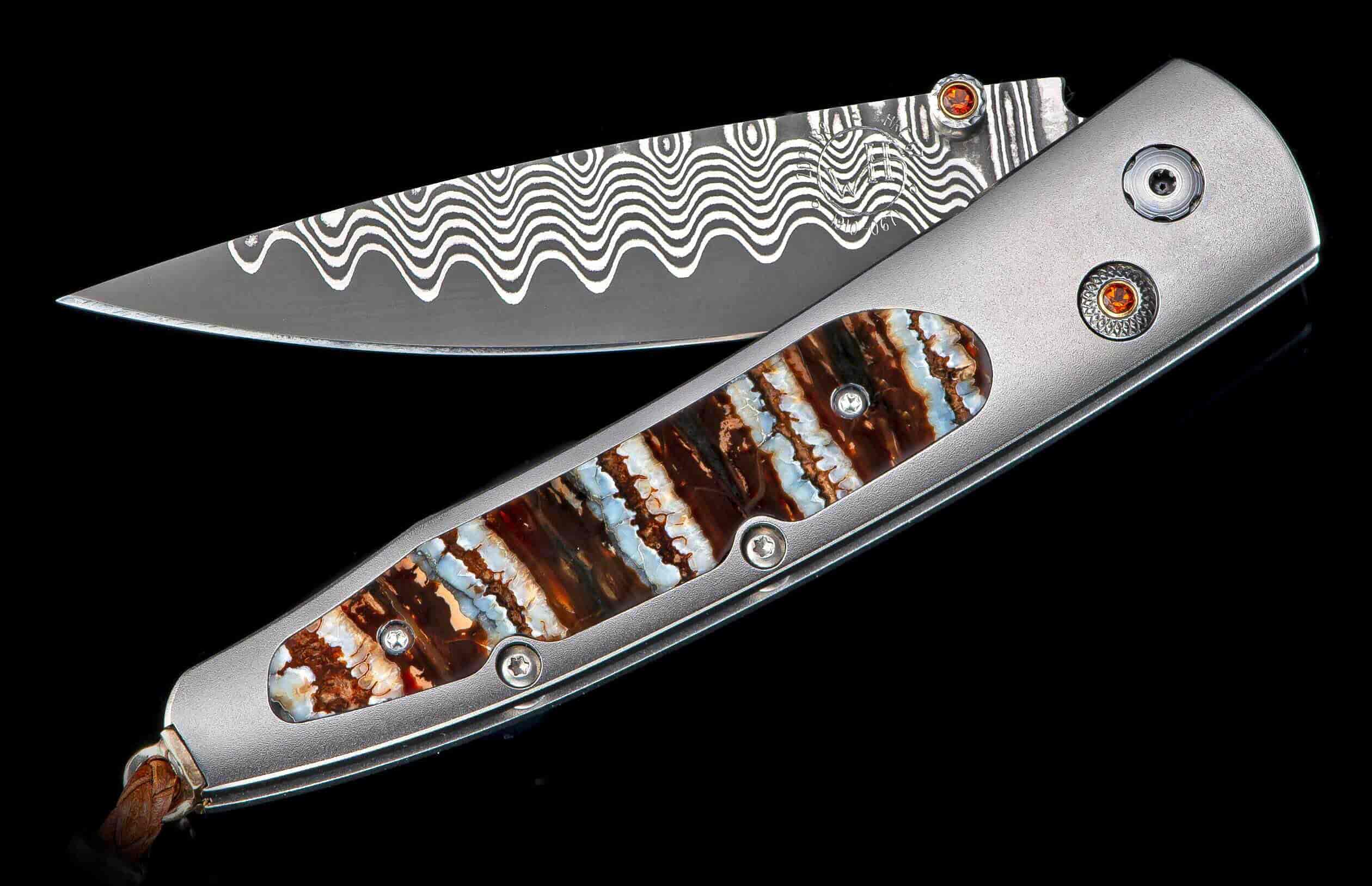Reverso
Titanium pocketknife featuring fossil mammoth tooth and 'wave' damascus blade
Product Details
The Lancet 'Reverso' features a frame in aerospace-grade titanium, inlaid with a piece of 10,000 year-old fossil Woolly Mammoth tooth. The blade is 'Wave' damascus with VG-10 core; the one-hand button lock and the thumb stud are set with citrine gemstones. Sleek, elegant, refined, and comfortable in the hand and to the eye, the Lancet defines the essential gentleman’s folder in the modern world. The ‘Reverso’ features some of the exotic materials and hand-forged metals that are the hallmark of William Henry's collections; a distinctive personality statement to be worn and used for a lifetime.
Product SKU: B10 REVERSO
Features & Specs
- One-hand button lock system
- Leather carrying case
- Shipped in an elegant wood presentation box
- Dimensions:
Blade 2.75" (69.9mm)
Handle 3.63" (92.2mm)
Overall open 6.38" (162mm)




